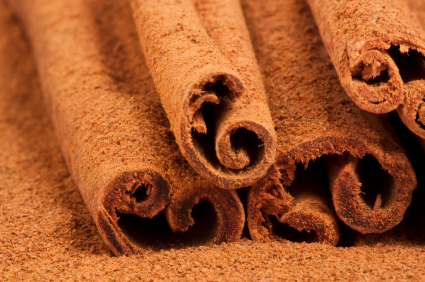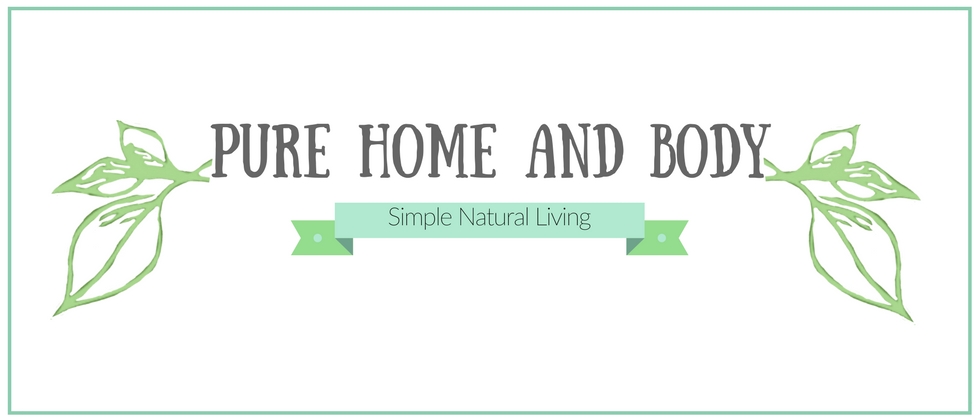 Cinnamon Bark (Cinnamomum verum) is from the Lauraceae (laurel) botanical family. The essential oil is steam distilled from the bark of the tree. Cinnamon is reputed to be part of the “Marseilles Vinegar” or used by grave robbing bandits during the 15th century Plague to protect themselves.
Cinnamon Bark (Cinnamomum verum) is from the Lauraceae (laurel) botanical family. The essential oil is steam distilled from the bark of the tree. Cinnamon is reputed to be part of the “Marseilles Vinegar” or used by grave robbing bandits during the 15th century Plague to protect themselves.
Ancient Oil Cinnamon bark oil has been used in many cultures for thousands of years. For example, there are many biblical references to specific uses of cinnamon in a recipe for a “Holy Annointing Oil” Exodus 30:23. It has been researched as a natural analgesic, blood sugar regulator, and even used to balance PMS symptoms.
Powerful Essential Oil Cinnamon Bark essential oil is highly anti-inflammatory, anti-bacterial, anti-viral, anti-fungal, anti-coagulant, circulatory stimulant and anti-parasitic. It consistently performs well against microbes in scientific research and supports healthy digestion. Cinnamon is very potent and considered a “hot” oil. It can be irritating to the skin and should always be diluted. It might also be irritating to the nasal passages if inhaled directly from the bottle or a diffuser.
This information is for educational purposes only. These statements have not been evaluated by the FDA and Pure Home and Body LLC is not intending to diagnose, treat or cure any disease. For medical treatment consult a doctor.
Select Research
H. B. Singh1,*, M. Srivastava2, A. B. Singh1 andA. K. Srivastava. Cinnamon bark oil, a potent fungitoxicant against fungi causing respiratory tract mycoses. Allergy
Volume 50, Issue 12, pages 995–999, December 1995. http://onlinelibrary.wiley.com/doi/10.1111/j.1398-9995.1995.tb02515.x/abstract.
Abstract: Cinnamic aldehyde has been identified as the active fungitoxic constituent of cinnamon (Cinnamomum zeylanicum) bark oil. The fungitoxic properties of the vapours of the oil/active constituent against fungi involved in respiratory tract mycoses, i.e., Aspergillus niger, A. fumigatus, A. nidulans, A. flavus, Candida albicans, C. tropicalls, C. pseudotropicalis, and Histoplasma capsulatum, were determined in vitro as minimum inhibitory concentration (MIC), minimum lethal concentration (MLC), inoculum density sustained, and exposure duration for fungicidal action at MIC and higher doses, as well as effect of incubation temperatures on fungitoxicity. It is concluded that these inhalable vapours appear to approach the ideal chemotherapy for respiratory tract mycoses
Maruzzella, Jasper C., Sicurella, Nicholas A. Antibacterial Activity of Essential Oil Vapors.Journal of the American Pharmaceutical Association Volume 49, Issue 11, pages 692–694, November 1960. http://onlinelibrary.wiley.com/doi/10.1002/jps.3030491103/
Abstract: Vapors of 133 essential oils were used in conducting 784 tests on six test organisms. In this series of tests, the vapor showed antibacterial activity in 179 (23%) cases. The organisms tested were S. aureus, B. subtilis var alterrimus, S. fecalis, E. coli, M. avium. M. avium was the most susceptible to essential oil vapors, E. coli the most resistant. Moreover, the Gram-positive bacteria were more vulnerable to essential oil vapors than the Gram-negative. Thyme oil was found to produce the largest zone of inhibition on all test organisms. Other oils tested with potency against all bacteria to some degree included: Cassia U.S.P., Cinnamon, Ceylon, lemongrass, rectified, Origanum (Oregano), Origanum rectified, Savory select, Thyme red, Thyme White.Essential oil vapors effective against E. coli were cassia U.S.P (20 minutes), cherry laurel (90 min), cinnamon (Ceylon) (19 min), eucalyptus rectified N.F. (15 min), origanum (21 min), savory select (20 min), thyme red (28 min), thyme white N.F. (29 min).
Velluti, V. Sanchis, , A.J. Ramos, J. Egido, S. Mar?́n. Inhibitory effect of cinnamon, clove, lemongrass, oregano and palmarose essential oils on growth and fumonisin B1 production by Fusarium proliferatum in maize grain. Volume 89, Issues 2–3, 31 December 2003, Pages 145–154. http://www.sciencedirect.com/science/article/pii/S0168160503001168.
Abstract: The effect of cinnamon, clove, oregano, palmarose and lemongrass oils on growth and FB1 production by three different isolates of F. proliferatum in irradiated maize grain at 0.995 and 0.950 aw and at 20 and 30 °C was evaluated. The five essential oils inhibited growth of F. proliferatum isolates at 0.995 aw at both temperatures, while at 0.950 aw only cinnamon, clove and oregano oils were effective in inhibiting growth of F. proliferatum at 20 °C and none of them at 30 °C. Cinnamon, oregano and palmarose oils had significant inhibitory effect on FB1 production by the three strains of F. proliferatum at 0.995 aw and both temperatures, while clove and lemongrass oils had only significant inhibitory effect at 30 °C. No differences were found using 500 or 1000 ?g essential oil g?1. At 0.950 aw, none of the essential oils had any significant effect on FB1 production. The results suggest that mainly cinnamon and oregano oils could be effective in controlling growth and FB1 production by F. proliferatum in maize under preharvest conditions.
A.R. Shahverdi, H.R. Monsef-Esfahani, F. Tavasoli, A. Zaheri andR. Mirjani.Trans-Cinnamaldehyde from Cinnamomum zeylanicum Bark Essential Oil Reduces the Clindamycin Resistance of Clostridium difficile in vitro. Journal of Food Science Volume 72, Issue 1, pages S055–S058, January/February 2007.http://onlinelibrary.wiley.com/doi/10.1111/j.1750-3841.2006.00204.x/pdf.
Abstract:Therapy with antimicrobial drugs, such as clindamycin, that perturb the intestinal flora but fail to inhibit growth of other microorganisms can permit the proliferation of Clostridium difficile and the elaboration of exotoxin. Therefore, there has been increasing interest in the use of inhibitors of antibiotic resistance for use in combination therapy. The essential oil of Cinnamomum zeylanicum bark enhanced the bactericidal activity of clindamycin and decreased the minimum inhibitory concentration of clindamycin required for a toxicogenic strain of C. difficile. Thin-layer chromatography (TLC) analysis of the essential oil separated a fraction (Rf= 0.54) that was the most effective at enhancing the clindamycin antimicrobial activity. Using gas liquid chromatography and known standards, the active fraction was identified as trans-cinnamaldehyde (3-phenyl-2-Propenal). Combinations of clindamycin and trans-cinnamaldehyde were tested to determine the fractional inhibitory concentration (FIC) index by conventional checkerboard titration. The FIC index for C. difficile was found to be 0.312, which confirmed the synergistic actions of clindamycin and trans-cinnamaldehyde. The presence of 20 ?g/mL of trans-cinnamaldehyde decreased the MIC of clindamycin for C. difficile 16-fold, from 4.0 to 0.25 ?g/mL. These results signify that low concentrations of trans-cinnamaldehyde elevate the antimicrobial action of clindamycin, suggesting a possible clinical benefit for utilizing these natural products for combination therapy against C. difficile.













[…] blends recommended specifically for cleaning and bacteria/infection control. immune boosting blend contains cinnamon, clove, rosemary and lemon essential oils. […]